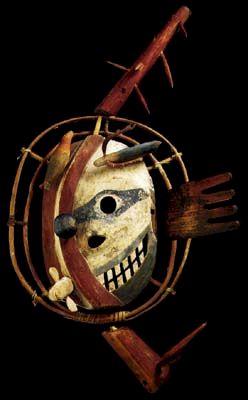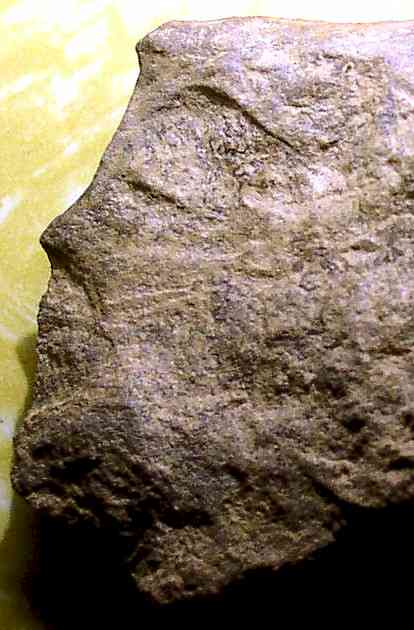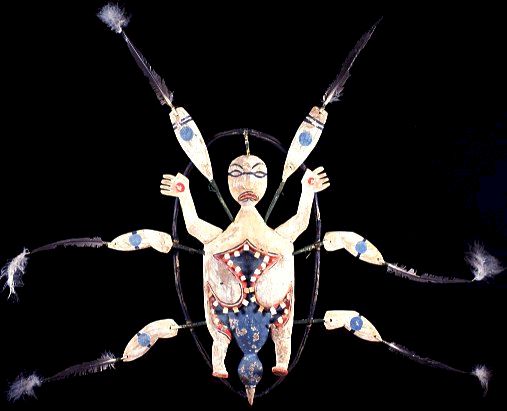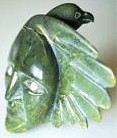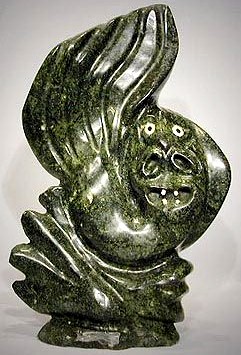|
Inuit
and Yupik ("Eskimo") Transformation Art
|
In 2003, a few
weeks after identifying the characteristic and recurring bird-human
themes
in artifact material at 33GU218 in Ohio, this author came upon
the traditional Inuit/Yupik "transformation art" on the
Internet. It was noted with much surprise that this
displays essentially the same
apparently shamanistic
themes, albeit in a much more virtuosic presentation.
Some cultural affiliation, however remote, seems unmistakable. Shown below are Inuit/Yupik works in specific common
motifs, along with lithic artifacts from the 33GU218 site
incorporating the same thematic iconography. Crude as it is in the stones, it is quite recognizable.
This should probably come as no surprise, given that similar shamanic-like imagery is very much evident in 20,000+
years BP Pleistocene artifacts of northeastern Asia (e.g. Siberia - see
Early Art of the Northern Far East: The Stone Age by Russian archaeologist M. A. Kiriyak), Siberia being the presumed
earlier residence and departure point of most of the earliest
migrants to North
America. |
__________ Bird or
Other Creature Emerging from Mouth __________
____________________
Bird over Forehead ____________________
__________
Bird or Other Creature Emerging from Belly __________
|
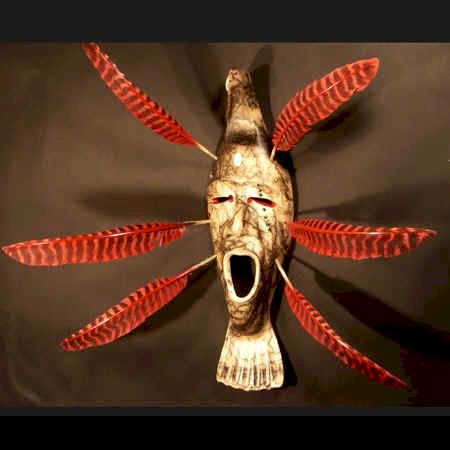
|
|
Yupik Mask by Phillip John Charette |
____________
One Eye Open, One Eye Closed ____________
|
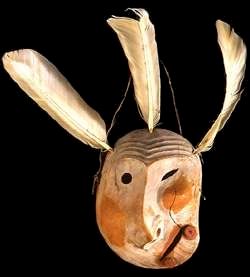
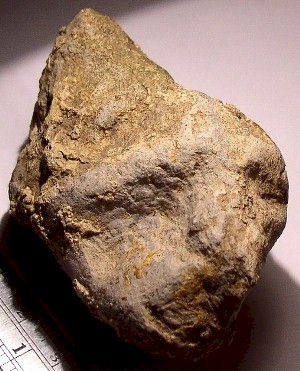
Click
HERE for more examples. |
______________
Bird on Top of Bird (or whomever) ______________
|

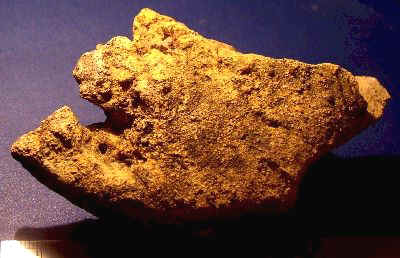
|
|
By Osuitok Ipeelee
At 33GU218 |
|
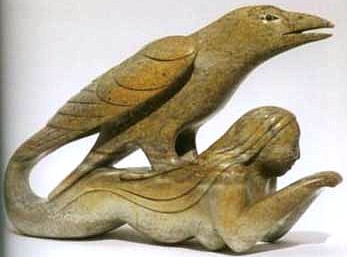
|
|
(Artist
unknown) |
_______
Two-Faced (Janus-like) Figure - Human/Animal _______
_________________________
_________________________
|
Modern Inuit
sculpture by Tukiki Manome. Note the two faces looking in
opposite directions, a constantly recurring motif in the stone
figures at Day's Knob (33GU218).
|
So far, one conspicuous theme in the
Day's Knob assemblage that has not (to this author, anyway) shown
itself explicitly in Inuit/Yupik "transformation art" is
that of one creature emerging egg-like from
the posterior of another. This is a bit surprising given its
prominence in much earlier "old world" lithic artifact
material exhibiting the same motifs.
|
Top
of Page
| Click your browser's
"Back" button to return to the point from which
you entered this page. |
HOME

|
|


